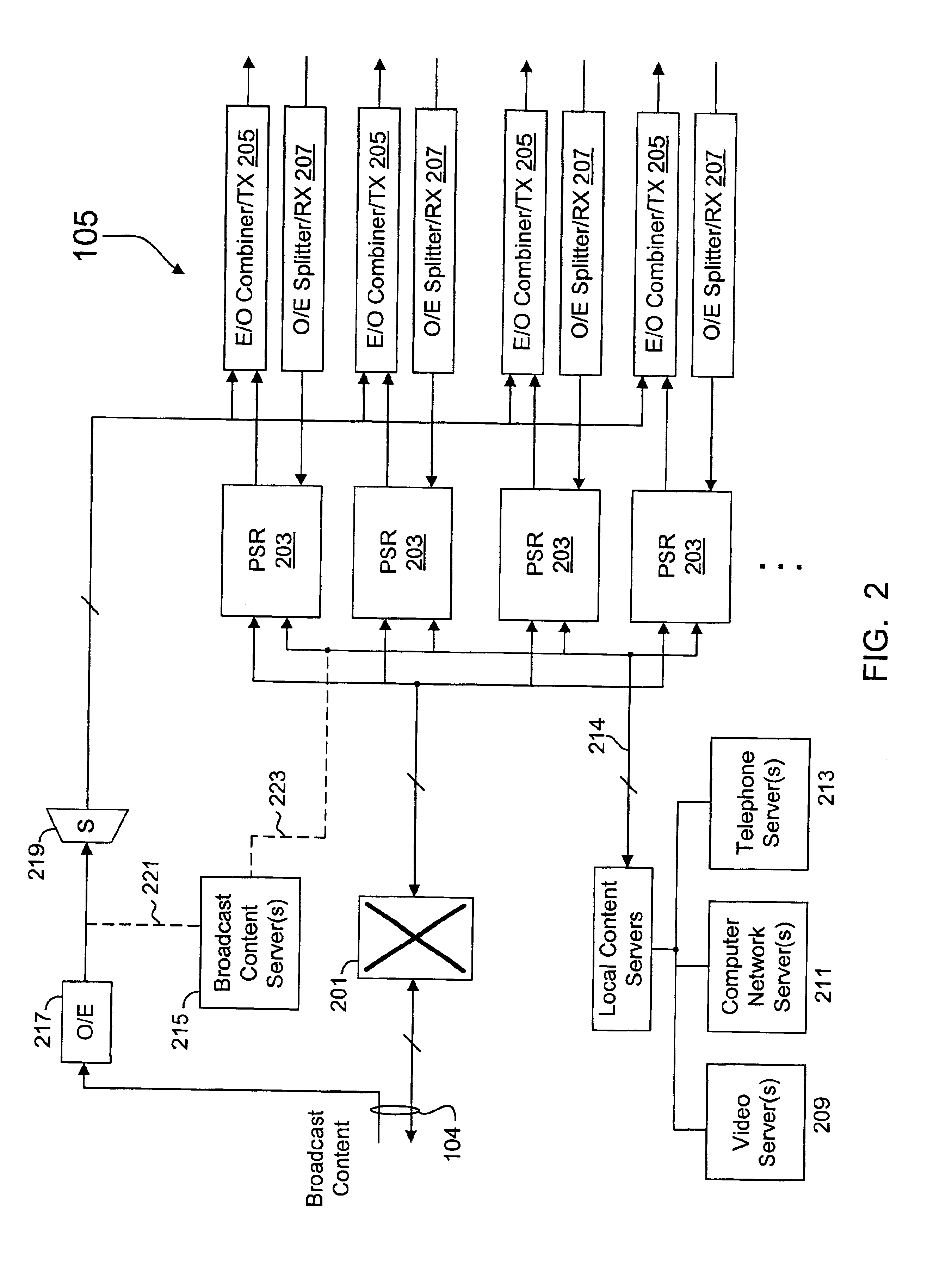Distributed block frequency converter
a frequency converter and distribution block technology, applied in the field of channelized communication systems, can solve the problems of bandwidth limitation, two synthesizers, and the need for bandwidth, and achieve the effects of reducing the number of synthesizers used, reducing the physical size and power requirements, and reducing interference between the resultant rf signals
- Summary
- Abstract
- Description
- Claims
- Application Information
AI Technical Summary
Benefits of technology
Problems solved by technology
Method used
Image
Examples
Embodiment Construction
[0026]FIG. 1 is a block diagram of an exemplary communication system 100 with an exemplary network architecture used to illustrate principles of the present invention. One or more sources 101 are coupled via appropriate communication links 102 to deliver source information to a headend 103, which distributes the source information to one or more distribution hubs 105 via respective communication links 104. Each distribution hub 105 further distributes source information to one or more nodes 107 via communication links 106, where each node 107 in turn distributes the source information to one or more subscriber locations 109 via subscriber links 108. In the embodiment shown, bi-directional communication is supported in which upstream subscriber information from any one or more of the subscriber locations 109 is delivered to the corresponding distribution hub 105 via the corresponding subscriber links 108. Depending upon the nature of the subscriber information and the network archite...
PUM
 Login to View More
Login to View More Abstract
Description
Claims
Application Information
 Login to View More
Login to View More - R&D
- Intellectual Property
- Life Sciences
- Materials
- Tech Scout
- Unparalleled Data Quality
- Higher Quality Content
- 60% Fewer Hallucinations
Browse by: Latest US Patents, China's latest patents, Technical Efficacy Thesaurus, Application Domain, Technology Topic, Popular Technical Reports.
© 2025 PatSnap. All rights reserved.Legal|Privacy policy|Modern Slavery Act Transparency Statement|Sitemap|About US| Contact US: help@patsnap.com



